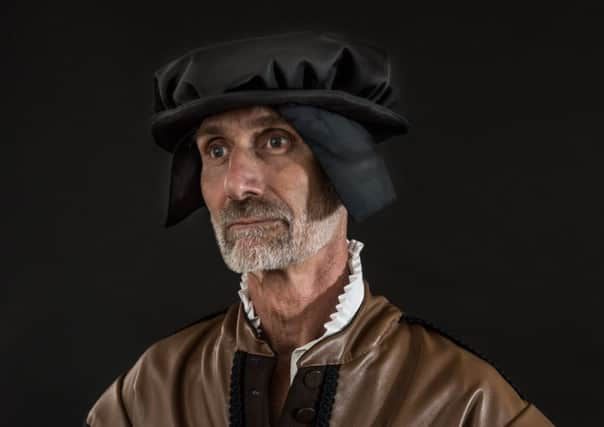Why Mary Queen of Scots’ time captive in Sheffield is a film just waiting to be made


“The film blurbs for the latest Mary Queen of Scots tell you one story,” Jon Bradley says. “But what about the Sheffield story of Mary?”
Jon is programme manager at Sheffield Manor Lodge, now a heritage visitor attraction and wedding venue in the South Yorkshire city, but once a Tudor manor house that was developed into a “comfortable” prison for Mary Stuart.
Advertisement
Hide AdAdvertisement
Hide AdThe new film, released in UK last Friday, explores the turbulent life of Mary, who was Queen of France at 16 and widowed at 18, as she asserts her claim to the English throne, threatening the sovereignty of her cousin Elizabeth. But Jon says it is her time in Sheffield that is “the film or TV drama that is waiting to be made”.
“In 1569 Mary was flung into captivity by Elizabeth I,” he explains.
“From 1570, she spent 14 years under luxurious house arrest in Sheffield with Bess of Hardwick (played by Gemma Chan in the movie) and her 4th husband, George Talbot the 6th Earl of Shrewsbury.
“When she first arrived in Sheffield she was kept holed up in the 300-year-old castle – out-of-fashion, uncomfortable and damp, before being moved to Sheffield Manor Lodge, the desirable residence up on the hill, set in the middle of a magnificent deer park.
Advertisement
Hide AdAdvertisement
Hide Ad“Here Mary’s routine of 5,000 days of leisurely captivity unfolds. Games of cards, embroidery, caring for her aviary of exotic birds, bathing in white wine and being woken by her guards’ drumrolls at 5am.
“She loved her dogs. Gedden, her favourite highland terrier, was concealed under her skirts when she laid her head on the block at her execution on a cold day in February 1586.
“Here too, the gossip, intrigue and the political games played out. At a time of intense religious and social division, Bess and George were looking after a devout Catholic prisoner queen on behalf of Elizabeth, a staunch Protestant.
“If Elizabeth were to die, then Mary had a strong claim to the throne of England. People were actively plotting to break Mary out of imprisonment and install her on the throne.
Advertisement
Hide AdAdvertisement
Hide Ad“George was out prosecuting Catholics in the area, raiding nearby Padley Chapel, while trying to keep in line his own daughter-in-law who was hauled up before the Privy Council and spent time in the Tower of London because of her Catholic sympathies.
“Mary and Bess fell out because Bess went too far with plotting to get her granddaughter Arabella on the throne of England. George’s tomb in Sheffield Cathedral has a lengthy inscription denying that he had an affair with Mary. It was all going on.”
Despite its connection with Mary, who was kept captive in Sheffield for what would prove to be a third of her life, and once being the home of powerful families including the de Furnivals, Nevils, Shrewsburys and Howards, Sheffield Castle became largely forgotten over time, after it was destroyed following the Civil War.
“Today, all that is left of Mary’s prison at Sheffield Castle are the excavations and finds from recent archaeological digs that are part of the council’s ambitions to transform the Castlegate area of Sheffield,” Jon says.
Advertisement
Hide AdAdvertisement
Hide Ad“Up on the hill though, at Sheffield Manor Lodge, you can walk in Mary’s footsteps, climb the 450-year-old stairs to the banqueting room in the Turret House and imagine enjoying a splendid repast after a satisfying hunt in the surrounding Deer Park.
“These stories come alive at a special event on Sunday, January 27 – a chance to meet and share time with the real Mary, her lord and lady gaolers and the people from her household.
“And, yes, a reminder to the film and TV script writers that there is a very dramatic story here, of Mary, 14 years a prisoner queen in Sheffield. A film that is just waiting to be made.”